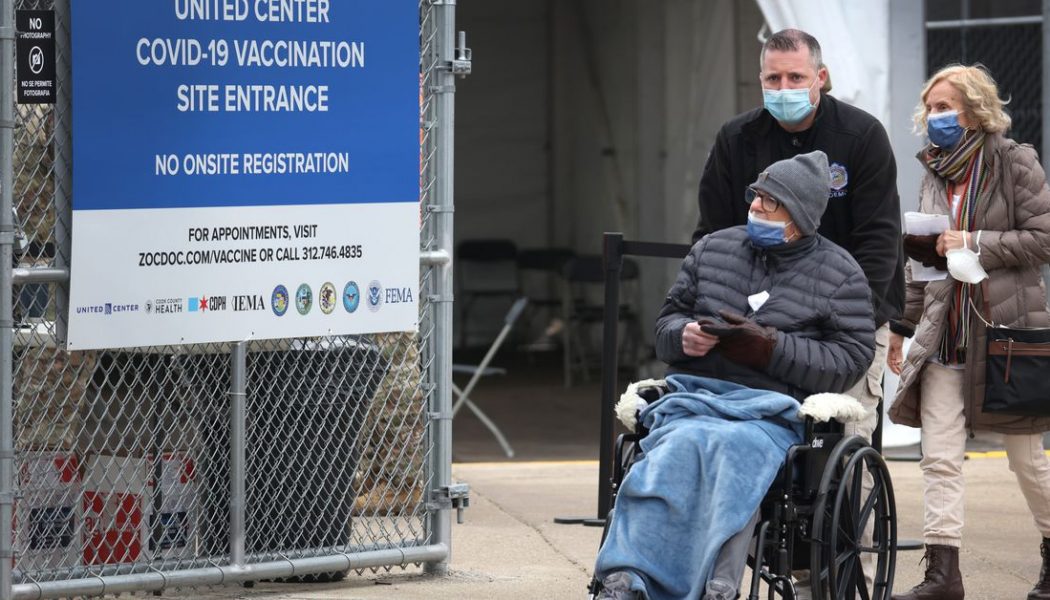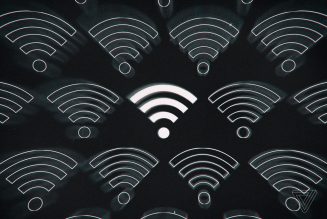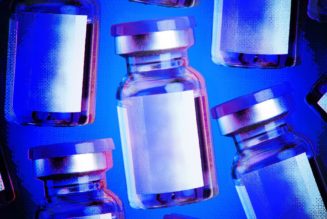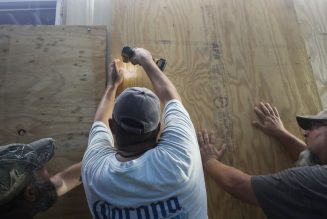
It’s never been possible to know for sure how many people in the United States are sick with COVID-19 at a particular time. Instead, we combine all of the metrics — the percentage of tests run that come back positive, the number of new cases reported each day, people coming to the emergency room sick with COVID-19 symptoms — to get an estimate. It’s like the story of the blind men and the elephant: experts can feel out the different pieces of information to get a sense of what an outbreak looks like, even when they can’t see it directly.
We’ve seen the same elephant emerge over and over again over the past year. First, the percentage of tests that come back positive increases. After a slight lag, hospitalizations start to rise, and then deaths. But this time, there’s a new wrinkle: vaccinations. That’s going to change the pattern and make the COVID-19 trends over the next few weeks and months harder to interpret.
One of the most important data points to track the virus’s spread has been the number of people hospitalized with COVID-19-like illness at a particular time. It’s a concrete metric. If someone is so sick that they need to be hospitalized, they’re usually in the hospital. Other measures, like the case rate and test positivity rate, are finicky; they fluctuate based on how many people decide to get tested.
“Hospitalizations are our hard outcome. Everything else is so dependent on testing,” says Melissa McPheeters, co-director of the Center for Improving the Public’s Health through Informatics at Vanderbilt University. That’s why we’ve looked to hospitalization trends to get a sense of the direction of the pandemic, even when case rates wobble.
Now, COVID-19 cases are starting to go up again in the United States. But this time, over 70 percent of people over the age of 65 in the United States have received a first dose of a COVID-19 vaccine. That’s the group that, if they catch the virus, is most likely to be hospitalized or to die. Now they’re vaccinated — and their risk of hospitalization and death is incredibly small.
That could throw our normal data patterns out of whack. Cases could go up because many states are relaxing restrictions while most people still aren’t vaccinated. But the unvaccinated people getting sick may be younger and less likely to be hospitalized.
Our normal method of visualizing the elephant wouldn’t work anymore. It’s a good problem to have — fewer people in the hospital is a wonderful victory. But when case numbers wobble and testing goes up and down, hospitalizations will no longer be a reliable backstop to clarify what’s happening with the pandemic. “I don’t know that we can get as good of a sample of what’s going on in the community,” McPheeters says.
It might mean that we need to recalibrate the way we monitor the pandemic. Maybe there will be fewer people in the hospital, but we could take a closer look at that group, for example. If lots of people from one area of a city are in the hospital, or people who work in a similar industry, that might be a signal that there is more virus in that particular community — which could help people to determine their risk and show officials where to direct resources. “It’s not just how many people, it’s who is ending up in the hospital,” McPheeters says.
For the past year, people have scrutinized COVID-19 metrics to guide decisions on how they should behave — whether to send kids to school, meet up with a few friends, or get groceries delivered. Eventually, as more people get vaccinated, new patterns could start to emerge that might guide that analysis. And when the pandemic starts to fade, we won’t have to scrutinize the COVID-19 numbers quite as closely. But for now, everything is in flux, and we can’t assume that a number means the same thing today as it did in January.
Here’s what else happened this week.
Research
Unlocking the Covid Code
Take a deep dive into the world of genetic sequencing — and explore how this tool could change public health in a post-pandemic world. (Jon Gertner / The New York Times)
No one can find the animal that gave people COVID-19
Groups are searching for the animal that first passed the virus that causes COVID-19 to humans, kicking off the pandemic. It’s not an easy task, and international politics is making it that much harder. (Anthony Regalado / MIT Tech Review)
Development
AstraZeneca’s wild ride
On Monday, AstraZeneca announced that its vaccine was 79 percent effective. The next day, the government issued an incredibly unusual public rebuke of the company, saying those numbers were outdated. AstraZeneca released new numbers later this week finding that it was really 76 percent effective. Whew. In the end, it’s a pretty good vaccine with a bad communications problem. The FDA committee hearings for this one are going to be interesting. (Nicole Wetsman / The Verge)
Pfizer Begins Testing Its Vaccine in Young Children
Children under 12 are starting to participate in clinical trials for COVID-19 vaccines. Pfizer and Moderna are both starting their own trials to test how well the vaccines work in younger patients — and whether they are safe. (Apoorva Mandavilli / The New York Times)
Here’s a great video from our colleagues at Vox explaining the differences between vaccine efficacy numbers.
Perspectives
There were the two weeks in the summer when all she could smell was phantom smoke. The odor was so strong that she woke up one morning startled, convinced that something in her house was on fire. Sometime later, she was able to smell her boyfriend’s cologne again—but instead of the familiar scent she had always loved, it was a sickening chemical odor. There’s also the hand soap at work, which used to smell generically fruity to her but now smells exactly, and eerily, like Burger King Whoppers.
— Sarah Zhang writes about Ruby Martinez’s experience recovering her sense of smell after COVID-19 in The Atlantic.
As of December 10, my health-care plan had billed me for $536,000. My plan paid for most of it, but I still owe around $150,000. That doesn’t include my bill for the implant. The medical bills lag; it takes months for things to come through. At first, it was stressful for me to look at them, but now it’s a joke. I look at them and think, I don’t know how to pay that. My premium is $750 a month, and my co-workers have been chipping in to cover that.
— Liza Fisher tells journalist Wudan Yan about the costs of COVID-19 in a story for Intelligencer.
More than Numbers
To the more than 505 million people who have been vaccinated — thank you.
To the more than 125,864,307 people worldwide who have tested positive, may your road to recovery be smooth.
To the families and friends of the 2,761,409 people who have died worldwide — 547,756 of those in the US — your loved ones are not forgotten.
Stay safe, everyone.










